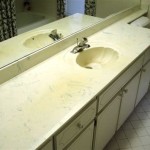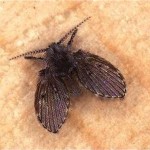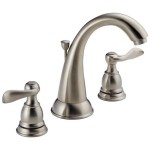How to Install Duct for a Bathroom Fan
A bathroom exhaust fan plays a crucial role in maintaining healthy air quality by removing moisture, odors, and pollutants. Proper ductwork is essential for efficient ventilation and prevents the fan from pushing air back into the bathroom. Installing ductwork for a bathroom fan requires careful planning and execution, ensuring a smooth and effective system.
Choosing the Right Duct Material
The first step in installing a bathroom fan duct is selecting the appropriate material. Common options include:
- Flexible Duct: Made from aluminum or vinyl, flexible duct is easy to install and bend around corners. It's often preferred for concealed runs within walls or ceilings. However, it can be prone to noise and may not be suitable for long distances.
- Rigid Duct: Constructed from metal or PVC, rigid duct offers better airflow and sound insulation. It's more durable and suitable for longer runs, but installation requires more work and specialized tools.
- Round Duct: Offers optimal air flow and is often used in commercial buildings or larger residential projects.
- Square or Rectangular Duct: Fits easily into walls and can be installed in smaller spaces.
Consider the length of the duct run, the desired sound level, and budget to determine the most suitable material. Consult local building codes for specific requirements and recommendations.
Planning the Duct Route
Efficient ductwork requires careful planning to ensure optimal airflow and minimize noise. Consider the following factors when determining the duct route:
- Shortest Path: Choose the shortest possible route from the fan to the exterior vent to reduce airflow resistance and noise.
- Avoid Tight Bends: Minimize the number of tight bends in the duct run, as they can restrict airflow and increase noise levels.
- Ventilation Access: Ensure easy access to the duct for cleaning and maintenance. Choose routes that allow for future inspection and repairs.
- Ceiling or Wall: Consider the location of existing structures and select the most appropriate path for concealed runs or visible ductwork.
Mark the duct route using a pencil or chalk line to ensure a clear path for installation. Measure the distances carefully and plan for any necessary fittings, such as elbows, transitions, and dampers.
Installing Ductwork
Once the route is determined, the next step is to install the ductwork. This involves connecting various components and securing them in place. Here are some key steps:
- Attach the Fan to the Duct: Connect the fan outlet to the duct using a transition fitting or a duct connector. Ensure a secure connection to prevent air leakage.
- Run the Duct: Guide the duct along the planned route, securing it to the wall or ceiling using clamps, straps, or hangers. Ensure that the duct is free from obstructions and sits securely.
- Install Fittings: Use elbows and transitions to navigate corners and connect different duct sizes. Secure fittings using metal straps or glue depending on the material.
- Install a Damper: Install a damper to regulate airflow and prevent backdrafting. This allows for controlled ventilation and reduces energy consumption.
- Connect to Exterior Vent: Finally, connect the duct to the exterior vent using a transition fitting or a vent adapter. Ensure a secure connection to prevent air leakage and ensure proper ventilation.
Follow manufacturer instructions and use appropriate tools and fasteners for secure installation. Ensure that all connections are tight and free from leaks. After installation, conduct a thorough inspection and test the fan to verify proper operation and ventilation.
Tips for Effective Duct Installation
To maximize the efficiency and longevity of the bathroom fan duct, consider following these tips:
- Insulate Ductwork: Insulating the duct, especially for long runs, can reduce noise and heat loss, leading to more efficient ventilation.
- Maintain a Smooth Duct Run: Avoid sharp bends or kinks in the ductwork, as they can restrict airflow and increase noise.
- Size Duct Properly: Ensure the duct size is adequate for the fan's airflow capacity. Oversized ducts can reduce airflow and noise.
- Use a Duct Sealant: Seal any gaps or joints in the ductwork using a duct sealant to prevent air leakage and maintain efficient ventilation.
By following these tips and proper installation techniques, you can create a reliable and efficient bathroom ventilation system. Regular maintenance and cleaning are crucial for optimal performance and longevity.

Installing A Bathroom Fan Fine Homebuilding

Venting A Bath Fan In Cold Climate Fine Homebuilding

Blog

Installing The Vent For A Bathroom Exhaust Fan

How To Install A Bathroom Fan Diy Family Handyman

Install A New Bathroom Vent Fan Light

How To Install A Bathroom Exhaust Fan

The Basics Of Bath Fans Fine Homebuilding

Inspecting For Air Sealing At Kitchen And Bathroom Exhaust Fans Internachi

How To Replace And Install A Bathroom Exhaust Fan From Start Finish For Beginners Easy Diy
Related Posts







